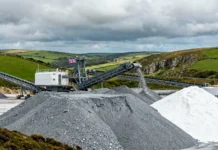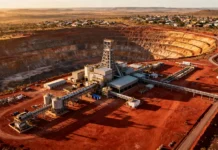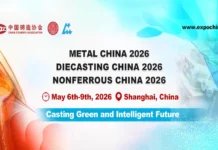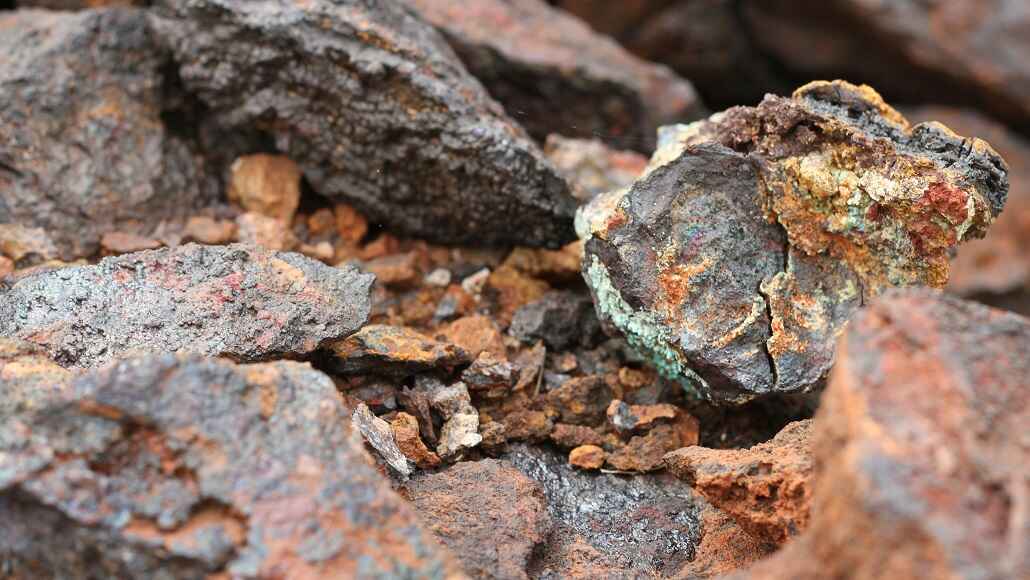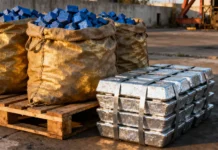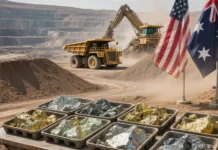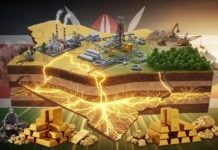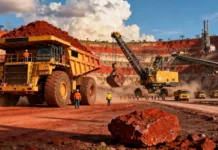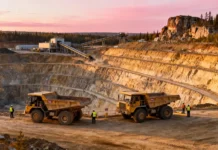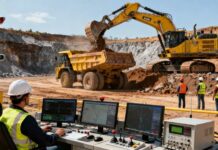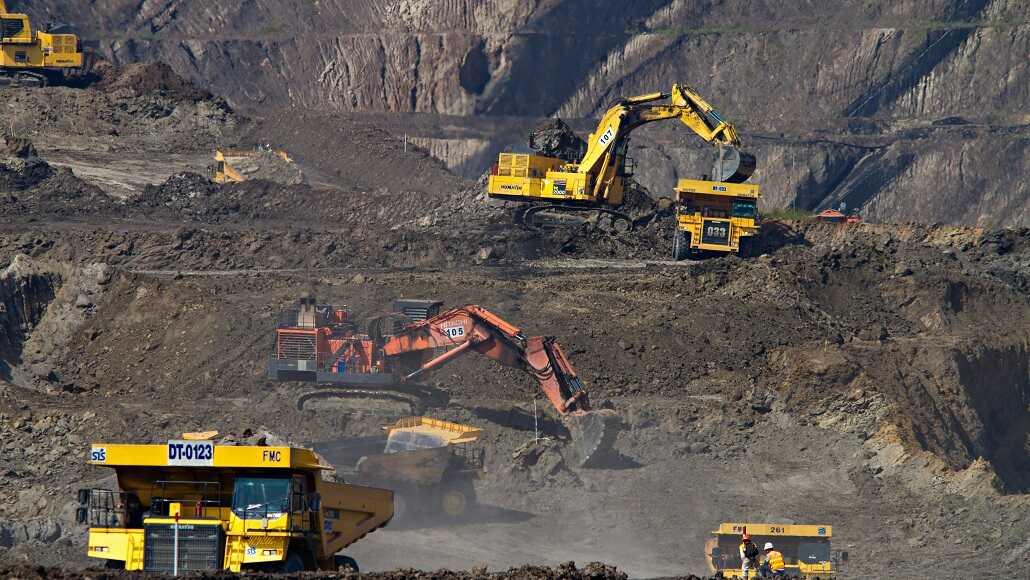In an era that is defined by cutthroat competition when it comes to natural resources and technological dominance, the control as well as accessibility of critical minerals has become important to national sovereignty. The United States, which has been dependent on foreign sources when it comes to raw materials like rare earth elements, lithium, cobalt, and graphite, finds itself in a very precarious situation. These minerals are indeed indispensable when it comes to the operations of modern industries – they help in powering electric vehicles, support telecommunication infrastructure, help in high-performance defence systems, and facilitate the transition towards renewable energy.
The immediate need to secure domestic sources of such materials has never been so complete. Political tensions, especially with China, which happens to be a major supplier of rare earths as well as other critical minerals, have brought vulnerabilities within the mineral supply chain of America into sharp relief. Against this kind of a backdrop, President Trump inked a significant executive order in order to fast-track the permission as well as development of critical mineral mining projects throughout the United States.
This executive directive highlights a very transparent federal policy – to decrease bureaucratic redtape, make utmost use of domestic mineral wealth, and speed up the trajectory of the United States towards resource independence. Although the political motivations are indeed intricate, the broader strategic implications of this kind of move ripple throughout environmental, economic, and legal means, especially reshaping the American mining landscape.
What are the key provisions of the executive order?
-
Fast permission of mining projects
At the center of the executive order happens to be a directive in order to speed up the federal permitting when it comes to critical mineral projects. Historically, when we talk of mining approvals in the US, it takes 7 to 10 years and is often subject to overlapping agency reviews as well as public hearings. Under the new orders, agencies such as the EPA, as well as the Department of the Interior, are needed to streamline this process and eradicate any redundancies as well as prioritize projects that are tied to national interest. The idea is to cut approval timelines to between 2 and 3 years in select cases.
-
Fast-41 integration when it comes to mining projects in America
The executive order goes on to bring eligible mining projects under the Fast-41 framework, which is a coordinated permitting process that was introduced in 2015. The key features of this project are project timelines that are publicly disclosed, federal review deadlines, and oversight when it comes to the federal permitting improvement steering council.
By way of aligning mining projects in America along with infrastructure-level urgency, the order goes on to reposition it as strategic infrastructure and not only extraction.
-
Prioritization of federal land use
The order also instructs the Interior Department to pinpoint federal lands like national forests as well as BLM territories that have high mineral potential. These zones get fast-tracked when it comes to evaluation as well as permitting, specifically when environmental conflicts are really minimal. All this marks a transition from conservation-first land use to a more resource-focused federal land strategy that unlocks mineral wealth that was previously left completely untapped.
-
Modernization of mining law and regulatory reform
And finally, the order also calls for a review of outdated laws, such as the General Mining Law of 1872.
It is sought that agencies must recommend updates like modernizing the bonding rules for cleanup liabilities, clarifying any kind of mining waste responsibilities, and harmonizing the federal as well as state regulations. The idea is to not only decrease the uncertainty when it comes to developers but at the same time make sure that environmental standards are met by creating a more attractive investment opportunity and climate.
Effect when it comes to the mining industry
The executive order is anticipated to reshape mining projects in America by way of streamlining the processes, stimulating regional economies, and attracting loads of investments.
-
Decreased delays
With agencies pushed to fast-track the approvals and eradicate any kind of duplication, the companies can move from an exploration point to production in a much faster way. This not only lessens the project cost but also elevates the global competitiveness of the US when it comes to critical minerals.
-
Rising investment
Regulatory clarity, along with faster approvals, makes the US a more appealing geography to investors. With massive reserves when it comes to cobalt, lithium, and rare earths, a more predictable system goes on to encourage foreign indirect investments as well as joint ventures along with new mining entrants.
-
Creation of jobs
Regions such as Alaska, Nevada, and Arizona are all set to benefit from the increased activity. Job creation is eyeing a path beyond mining to equipment, manufacturing, local services, and logistics. Educational institutions may also stick to the idea of training a new generation when it comes to mining professionals.
What are the economic implications?
The executive order goes on to lay a foundation when it comes to economic growth, a supply chain that is resilient, and innovation, specifically in clean energy and defense areas.
-
Supply chain resilience
The US at present happens to depend 100% on imports when it comes to several minerals, hence leaving it vulnerable when it comes to supply chain disruptions as well as strategic pressure. Domestic mining elevates the autonomy and makes sure of continuity when it comes to sectors such as electric vehicles, electronics, and aerospace.
-
Economic progress
Mining happens to be a very high-value industry that can stimulate related sectors. States that are rich in minerals can see a very high GDP contribution, elevated infrastructure development, and a robust trade balance by way of reducing import dependence.
-
Advancement in tech
Materials such as rare earths and lithium happen to be vital when it comes to battery production, renewable technology, and electric vehicles. By way of securing a very stable domestic supply chain along with accelerated research and development and reduced costs, the US can elevate its leadership when it comes to technology manufacturing.
Challenges as well as criticisms
In spite of its strategic rationale, the executive order has gone on to face legal, environmental, and market-based barriers.
-
What are the legal challenges ahead?
Environmental groups, along with indigenous communities, happen to be preparing lawsuits citing probable violations when it comes to NEPA and ESA. There also happens to be a friction between federal FAST-41 policies along with state-level laws, thereby delaying the project that the executive order aims to speed up.
-
How about environmental risks?
It is well to be noted that fast-tracking the permits raises questions in terms of incomplete environmental reviews. Mining projects in America can as well lead to groundwater contamination, land degradation, and ecosystem disruption. Critics go on to argue that the strict deadlines may as well compromise the integrity of the environment.
-
What are the market-based dynamics?
The prices of commodities such as lithium, cobalt, and rare earths are very volatile. Even with a seamless regulation in place, price crashes or even oversupply can make projects economically unviable. The project’s long-term success may as well depend upon vertical integration, offtake agreements, and even government price balance tools or also stockpiling.
| Mineral | % Import Reliance | Top Foreign Supplier |
| Rare Earth Elements | 100% | China |
| Graphite | 100% | China |
| Cobalt | >70% | D.R. Congo |
| Lithium | >50% | Argentina/Chile |
| Manganese | 100% | South Africa |
In the end
It is worth noting that the executive order that has been issued under the Trump administration goes on to mark a turning point when it comes to the US approach to mineral resource policy. Due to the rising geopolitical as well as industrial pressures, the federal government has gone on to commit to a path that is full of proactive resource development – the one that syncs mineral strategy along with national security, technological sovereignty, as well as economic growth.
Although the idea to secure a domestic mineral supply chain happens to be timely and strategic, the barriers lie when it comes to executing this vision in a responsible way. Legal battles, community rights, and environmental ethics are going to remain central to the national dialogue. The path ahead will need not just fast processes but also innovation when it comes to sustainable mining practices, meaningful engagement when it comes to stakeholders, and transparency as far as governance is concerned. Only when such a balanced approach is followed can the US truly attain its mineral independence, and while doing so, go ahead and position itself as a worldwide leader when it comes to the next era as far as economic transformation and technological innovation are concerned.



